SEO
8 Strategies From Actual Travel Publishers and SEOs

SEO is critical in the travel industry. While most travelers might gain inspiration on TikTok, YouTube, or Instagram, they will still search on Google before purchasing.
In fact, according to Kevin Indig, travel was the fifth largest industry on the web by organic visibility in June 2024.
If you want to generate more bookings or get more customers, you will need to do SEO. To write this guide on travel SEO, I interviewed seven experienced travel SEOs:
Kevin Indig also very kindly shared his paid publication on travel SEO with me.
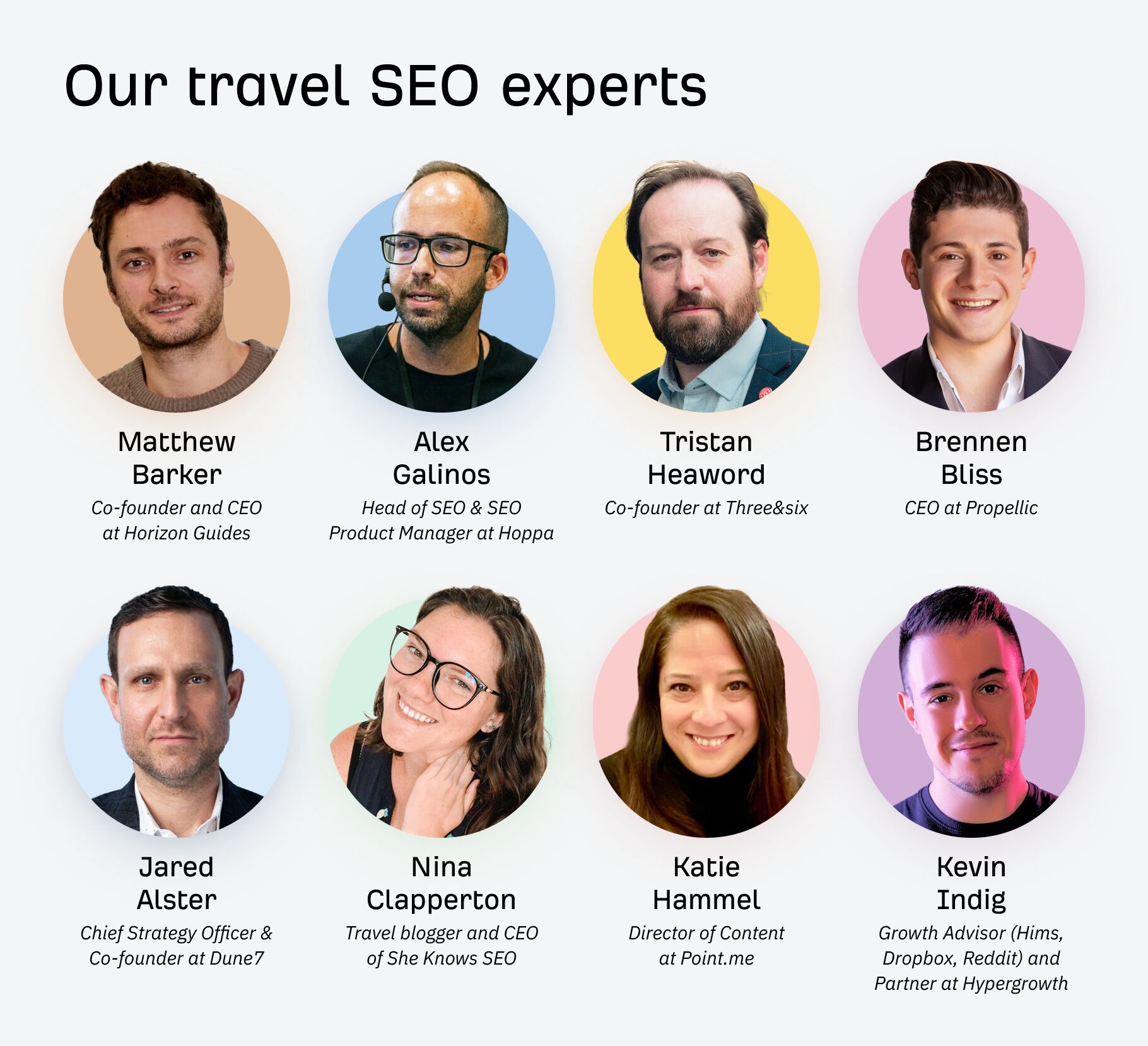

The basics of SEO are the same for every industry. You need to create high-quality content, earn backlinks, and make sure your site is free of technical issues.
But travel SEO has some unique challenges:
- Travel isn’t just one industry but is made up of many different industries and players—there are online travel agencies, comparison sites, hotels, airlines, cruise operators, tour operators, car rental companies, travel technology companies, travel bloggers, and even travel insurance.
- You’re competing with Google itself. Google has its own travel product, which it’s happy to insert into the SERPs. Google also dominates the SERPs by showing many different SERP features for travel-related keywords, which usually answer the query (e.g., things to do in Barcelona).
- Popular keywords are also dominated by huge international brands like TripAdvisor and Booking.com.
- Many travel companies, such as tour operators, only serve a particular local area.
- Many travelers don’t visit or book trips via a business’s website. This is especially true for airlines and hotels. Instead, travelers might search via Skyscanner or Booking.com.
- Seasonality and real-world events (e.g., terrorism, pandemics, natural disasters) can impact your search visibility.


In this article, we’ll show you how to solve these problems.
The most popular travel-related keywords are dominated by Google, SERP features, and big sites.




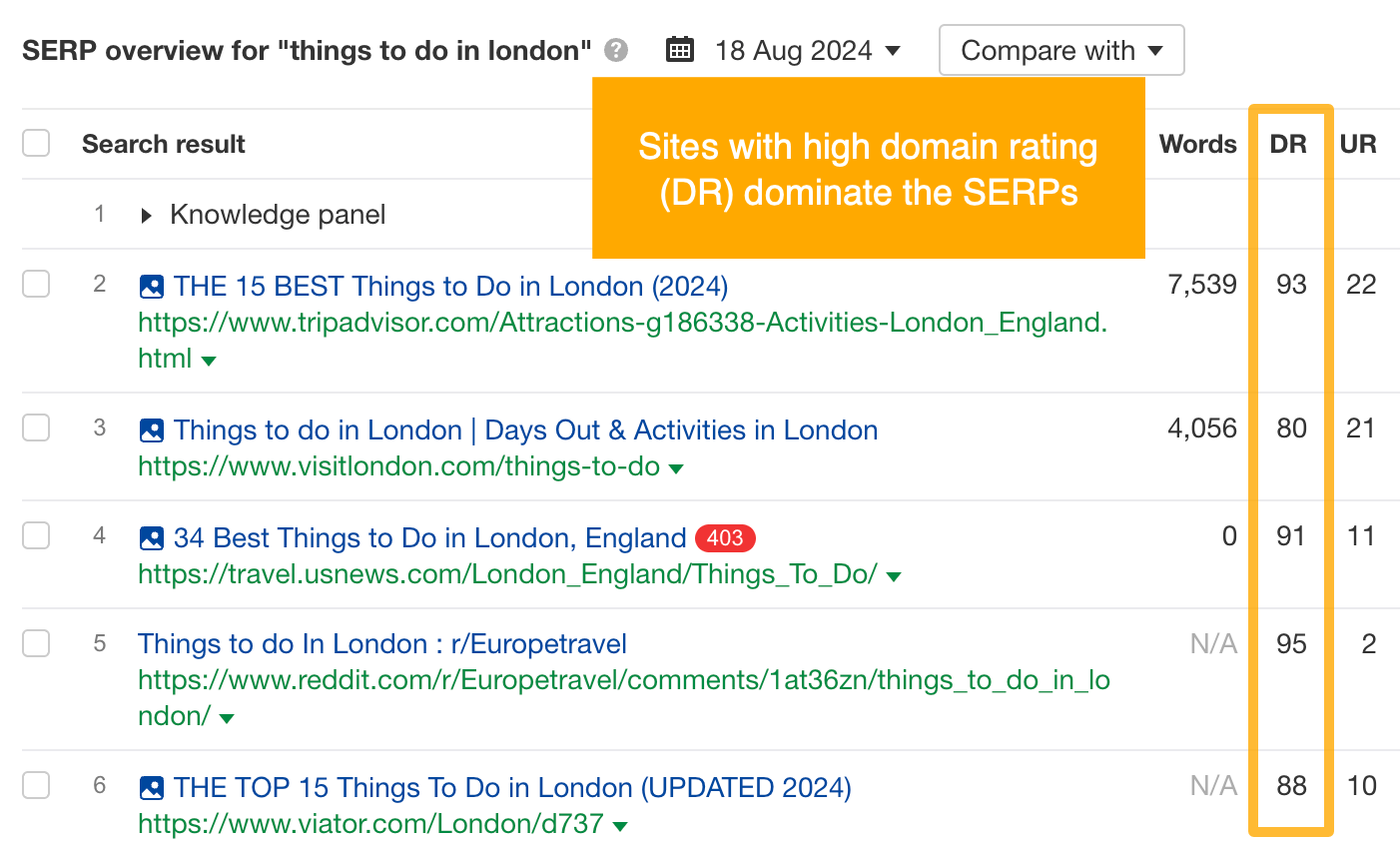

Coupled with Google’s insistence on rolling out AI Overviews (now in six more countries, besides the U.S.), many terms are out of reach for most travel websites.
This is why most of the experts I spoke to are now focusing on keywords that actually drive business. Typically, these are middle- to bottom-of-the-funnel topics.


For example, instead of targeting top-of-the-funnel (TOFU) terms like “london tour” or “things to do in London”, a London-based tour operator could target keywords like “harry potter walking tour for muggles in london” or “world war 2 walking tour london” (provided they offer those tours.)


While search volume may not be high, these keywords demonstrate intent. Someone searching for “harry potter walking tour for muggles in london” is close to the purchase decision—they’ve already decided to visit London or are perhaps already in London. They’re likely to convert.
This keyword is also easier to compete for: Keyword Difficulty (KD) is only 6 and there are sites ranking in the top 10 with low Domain Ratings:
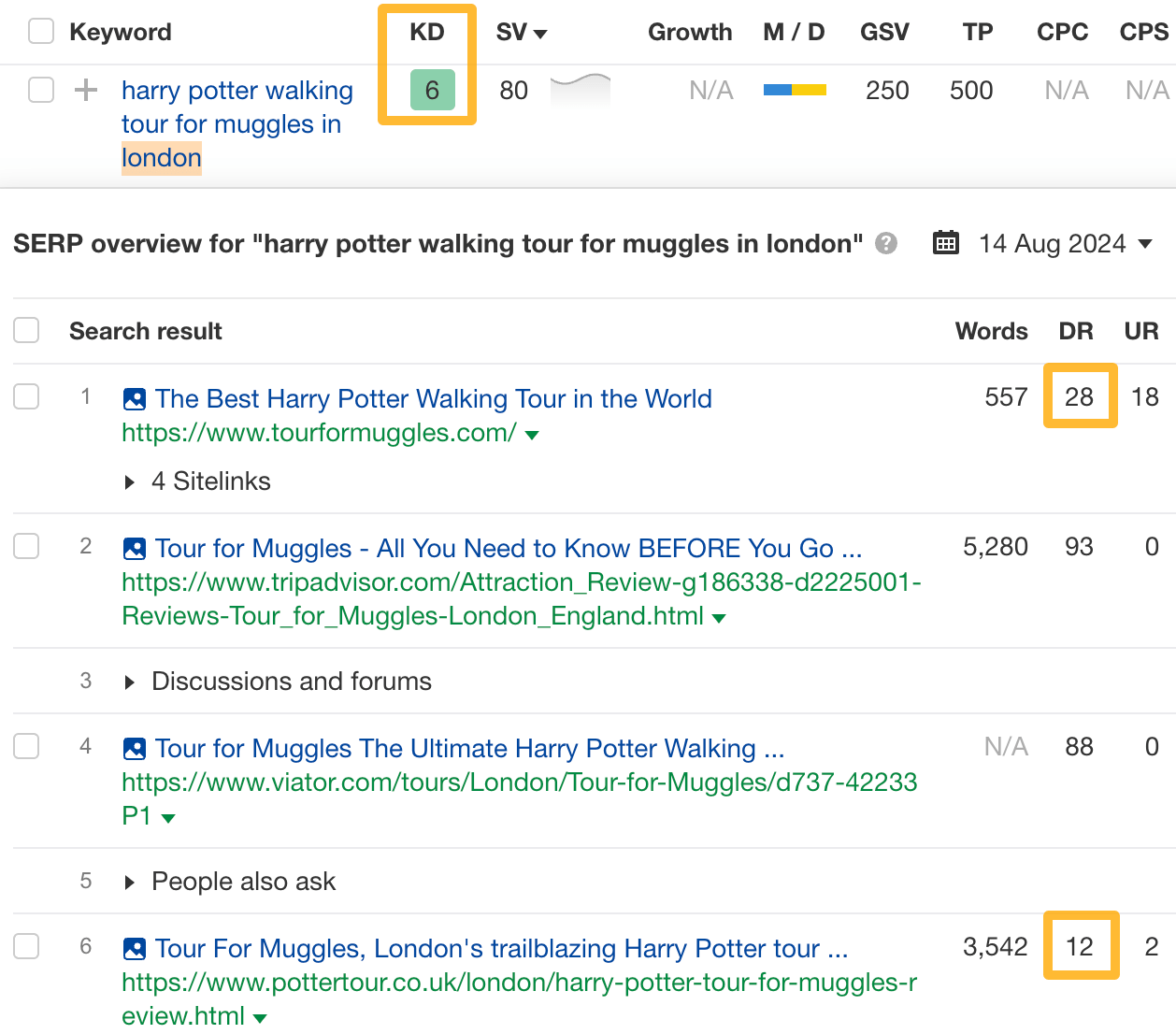

To find these keywords with business potential, enter a few seed keywords into Ahrefs’ Keywords Explorer and go to the Matching terms report. For example, as a London-based tour company, I might enter the locations I cover (e.g., Westminster, Kensington, Paddington, Soho).
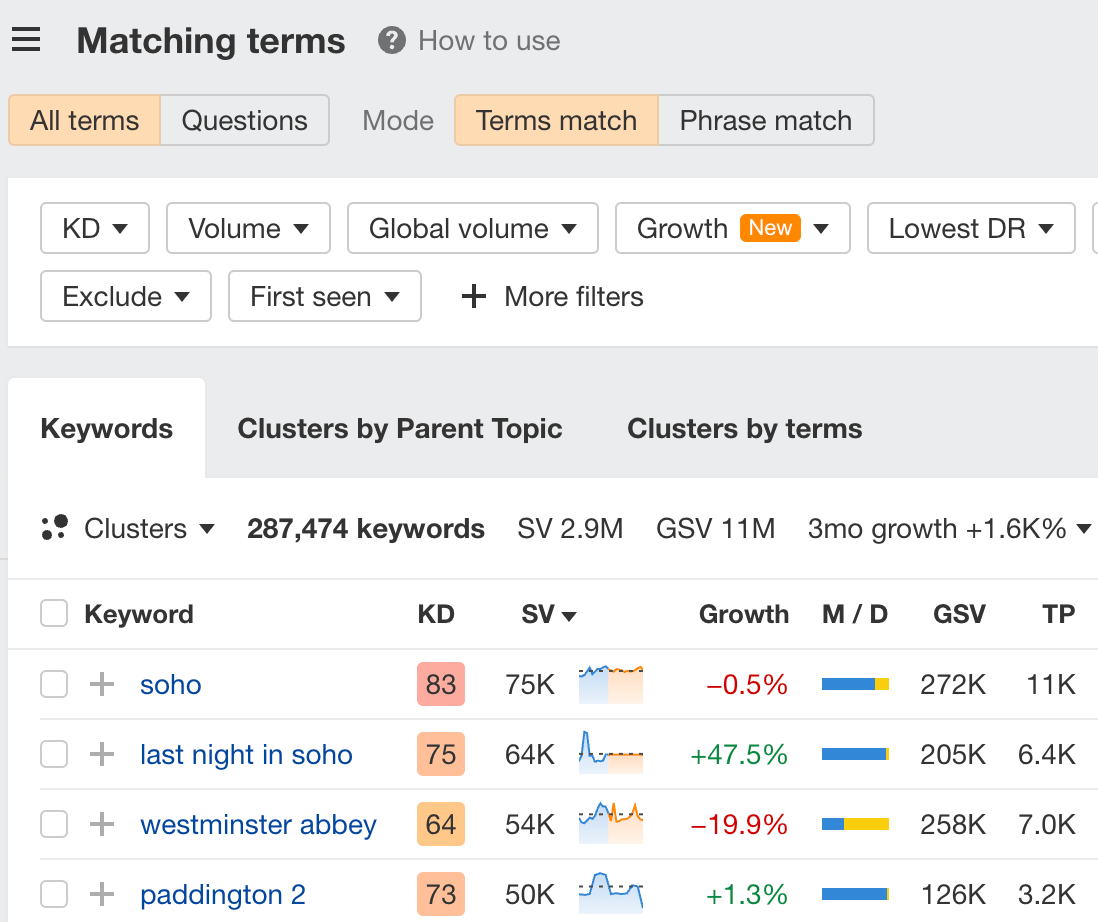

I’ll go through the report and pick out the keywords that are relevant to my site. I could even narrow down the report by specifically looking for keywords with the words “tour” or “tours”:


Once you have your list of keywords, you’d want to score them on their ‘business potential’, or how commercially relevant they are to your website. The simplest way is to ask whether your product or service fits in the topic. This is how we do it at Ahrefs too:
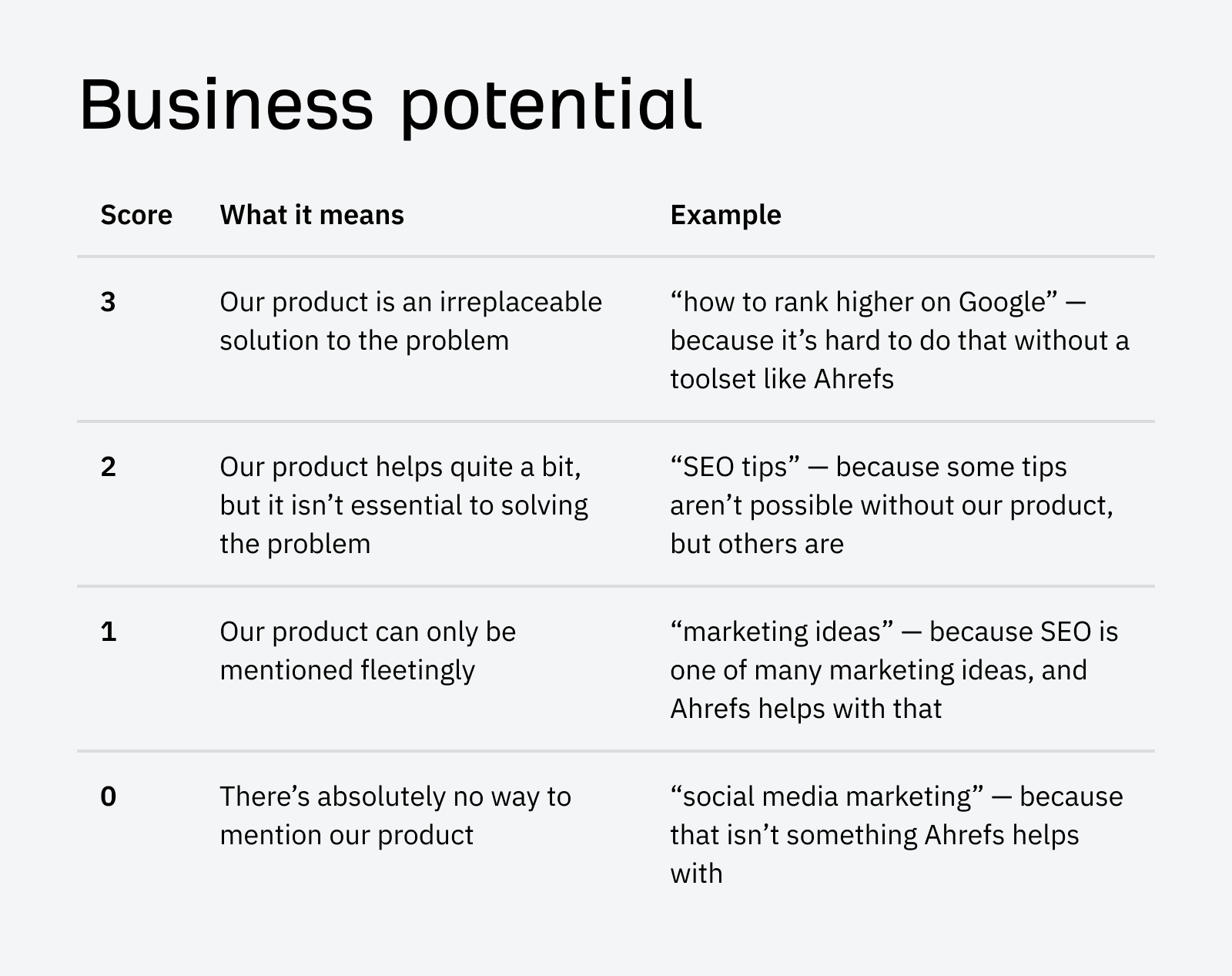

Alternatively, you can go in deeper with numbers and use this formula, as suggested by Brennen:
(Monthly Search Volume) x (Keyword Click-through Rate) x (Website Conversion Rate) x (Avg. Gross Margin or Revenue per Transaction)
Through this formula, you can see that even if traffic potential is low, as long as it’s commercially relevant, it can still be impactful to your company’s bottom line:


To get around competing with big sites in the SERPs, a common SEO strategy is to start with low-competition keywords. In the travel space, as Alex shared, this can manifest as targeting keywords for less popular destinations.
For example, look at the difference in search volume and keyword difficulty between these two keywords:
- Things to do in London
- Things to do in Southampton


It would be easier to target the keyword “things to do in Southampton”.
This would work even if you’re a London-based tour operator. You could easily create an article about the things to do in Southampton—and include a day trip to London as one of the items. (And pitch your tour, of course!)
To find keywords about these less popular destinations, Google for a list of cities or towns in your target country. For example, a search for “cities in England” brings up a list of cities from GOV.UK:
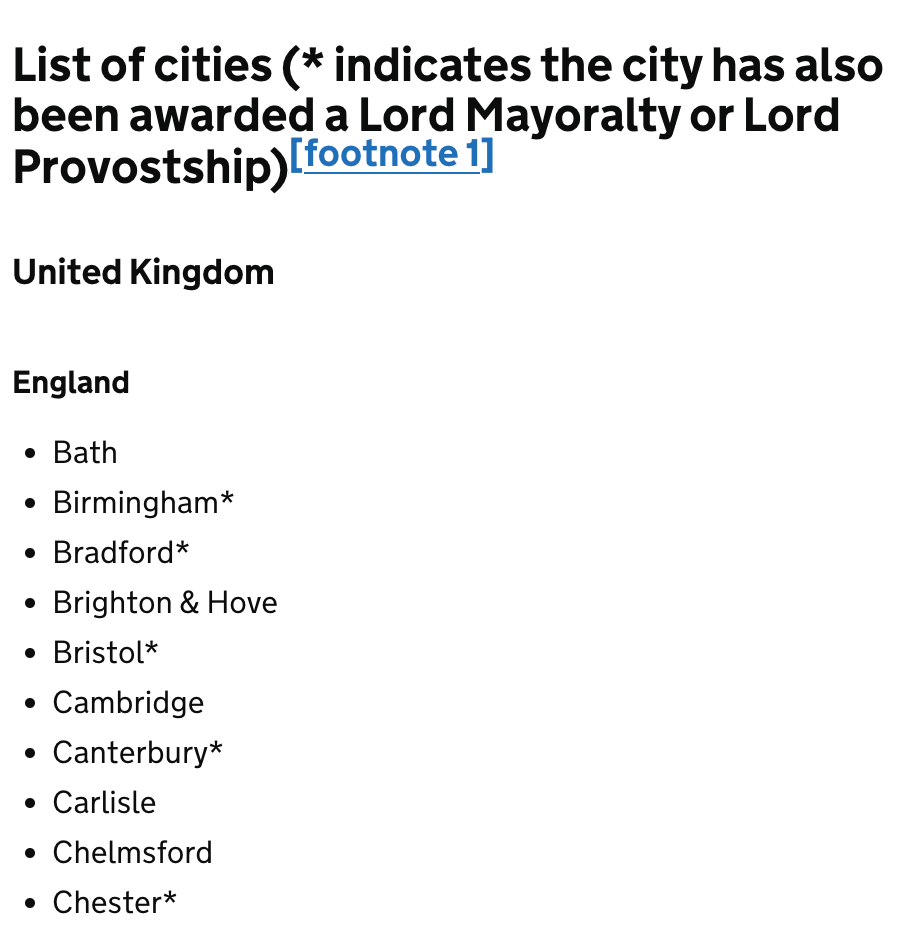

Copy and paste the cities into Keywords Explorer. Then, go to the Matching terms report, click Clusters by Parent Topic, select the Include filter, and add a few common modifiers, like “things to do”, “where to eat”, and “where to stay”. (James Brockbank has a list of common travel modifiers here.)
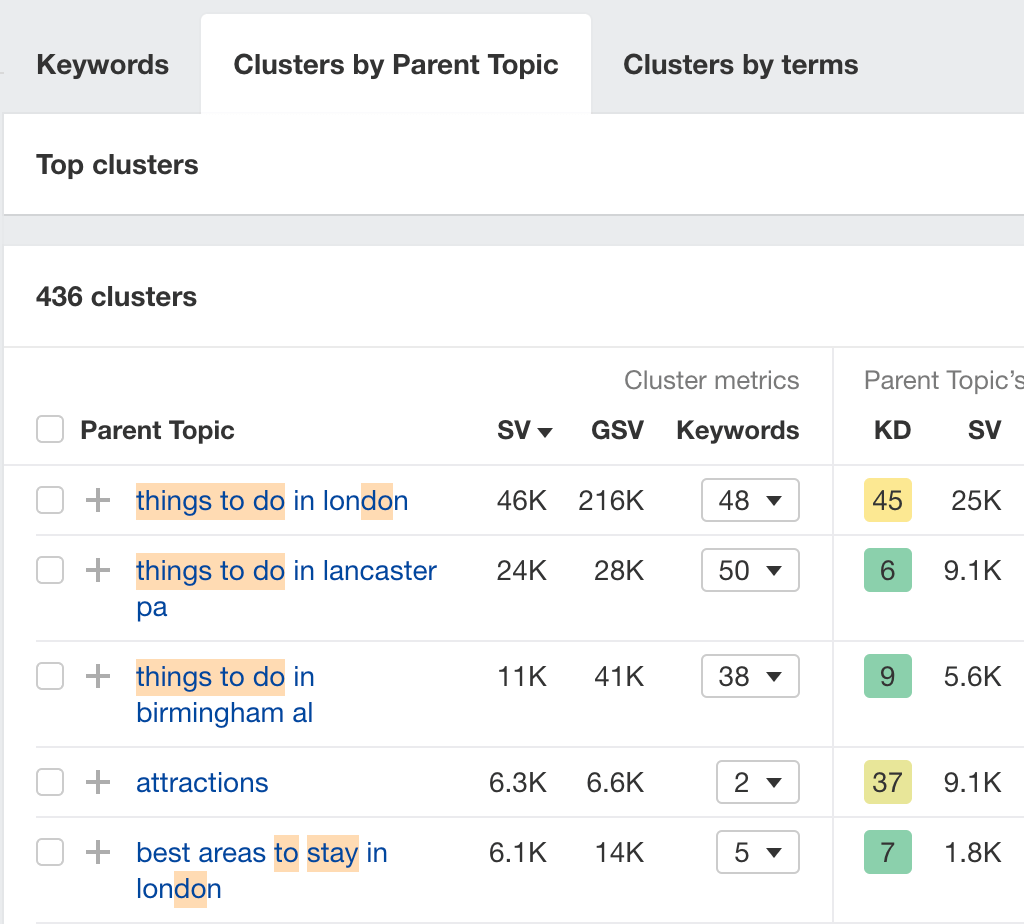

Going through the report will surface keywords for less popular destinations that we can target.
“Taylor Swift”.
If there was something surprising I heard from many of my interviews, it was the global superstar. The reason: She’s currently holding her Eras Tour all around the world. And search volume for her tour locations is spiking:
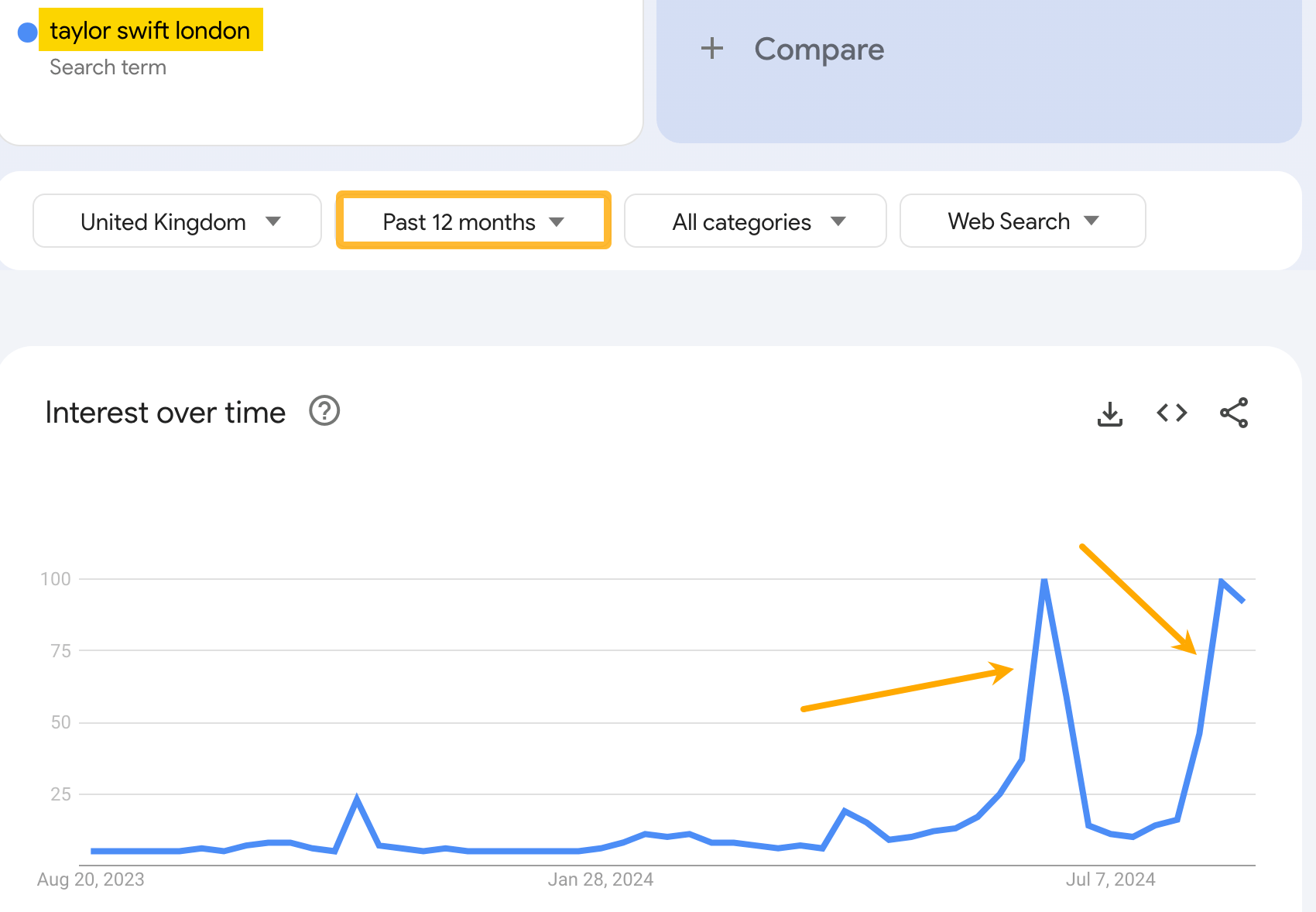

Which means: An opportunity for travel companies to take advantage of Swiftonomics.


It’s not just Taylor Swift. The Olympics, Tomorrowland, and even the Asian food festival in your local area could be topics you create content about. These trending events or topics may have low search volume but they could be the main reason why someone is traveling. It’s important to capture these opportunities.
As Kevin pointed out in his newsletter, only KLM bothered to seize the moment to rank for “flight paris Olympics”:
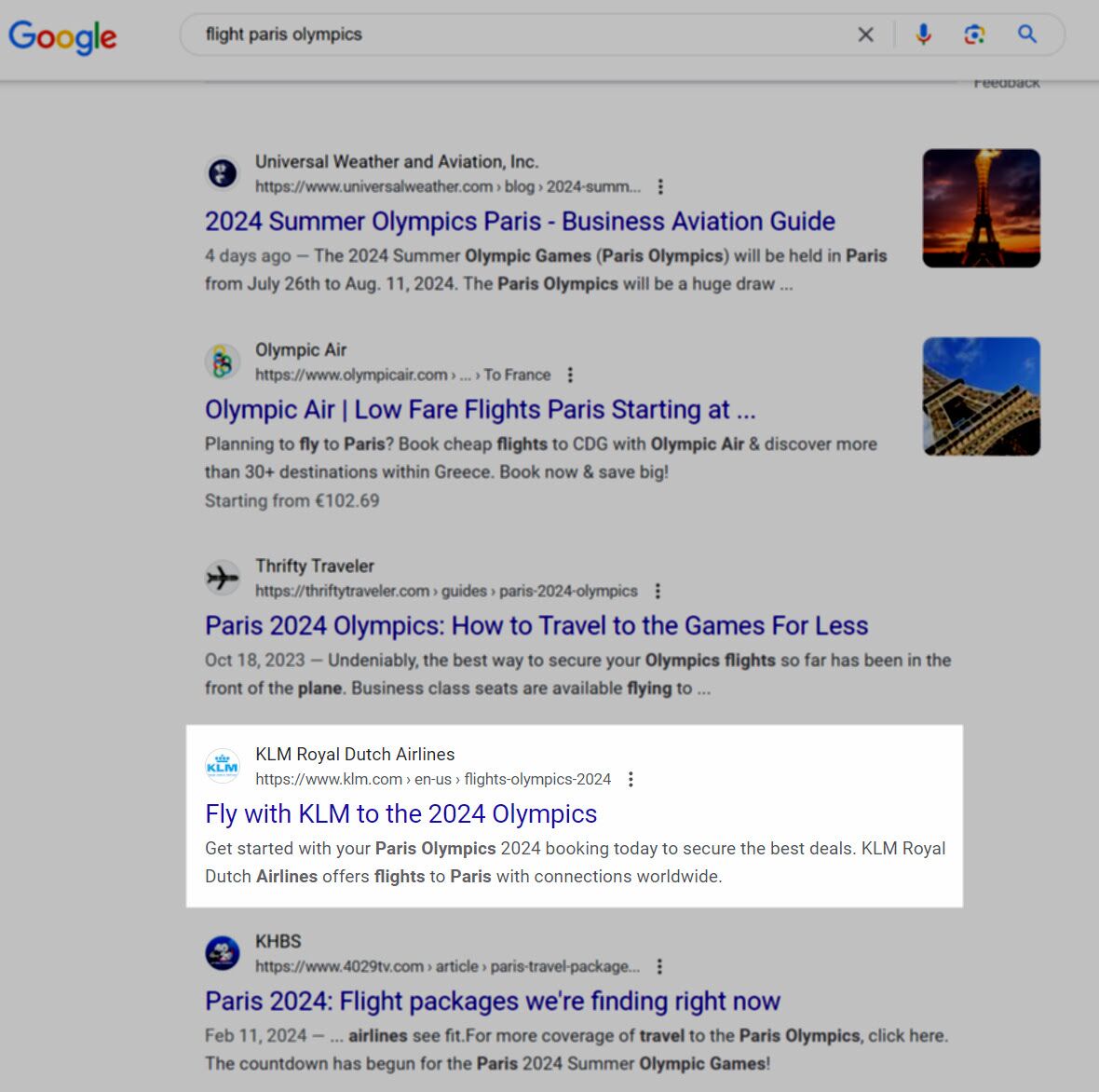

The easiest way to find trending topics or events is yourself. If you’re based in the area, you should be aware of most of the events that are happening. Alternatively, you can use Google Trends or enter your location (e.g., “London”) into Keywords Explorer. Then, click on the Growth column to sort by the most growth in search volume.
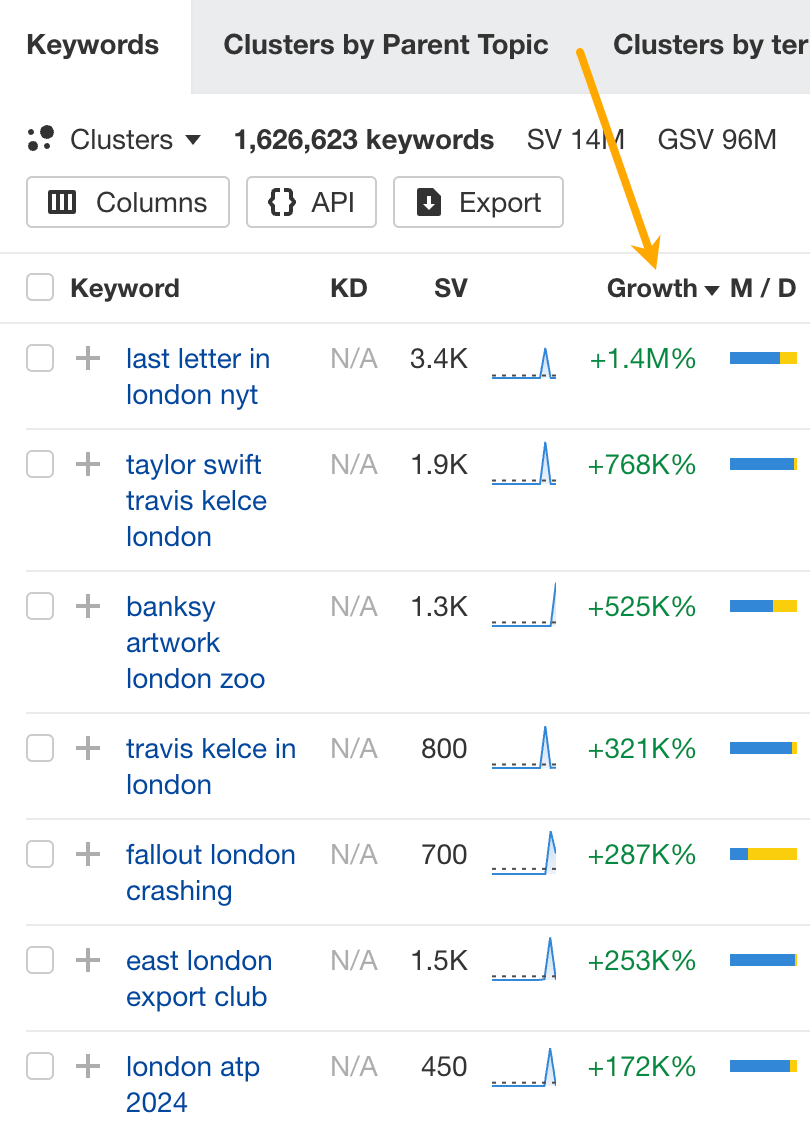

You can see why so many travel websites are targeting Taylor Swift (and don’t forget her boyfriend, Travis Kelce too!). There’s also interest in flying to Austin, Texas from London:


Topic clusters, or content hubs, are interlinked collections of content about a similar topic.
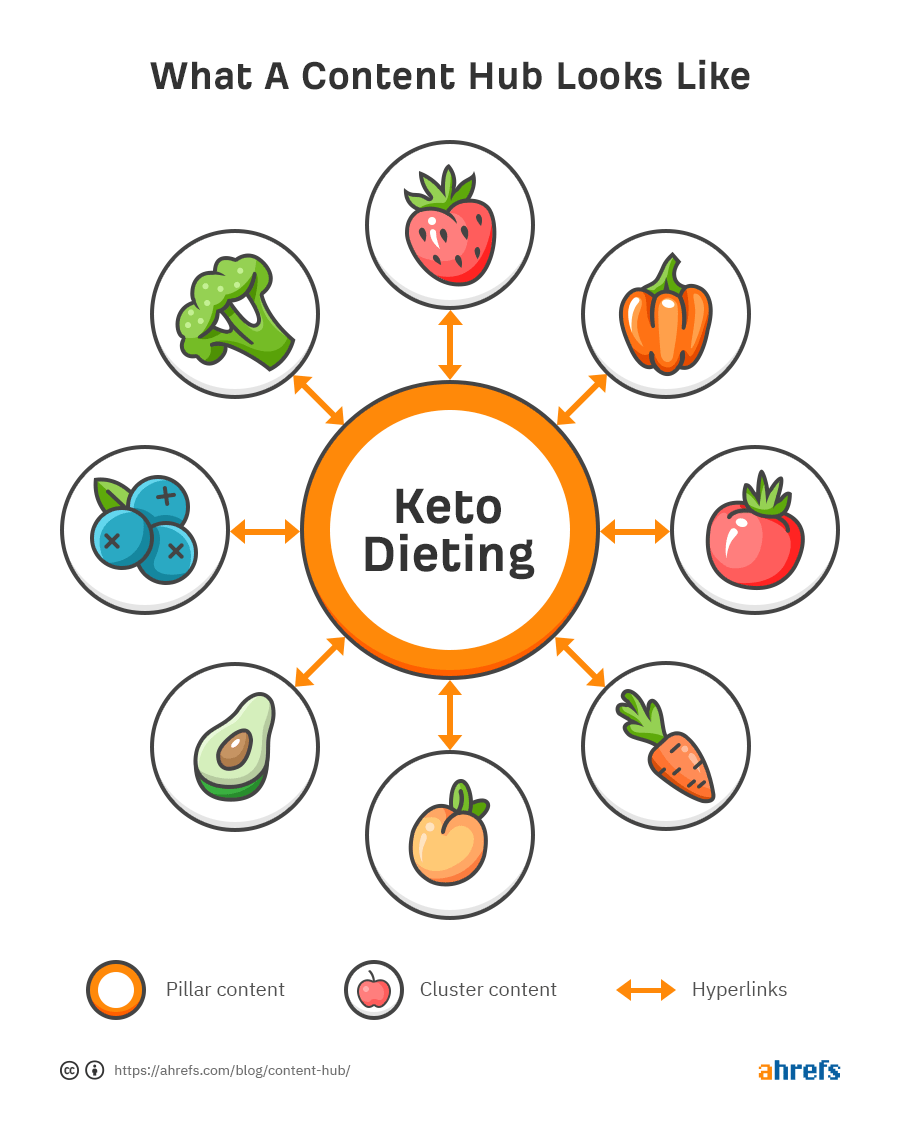

For example, our beginner’s guide to SEO is a content hub that links to the major aspects of SEO.
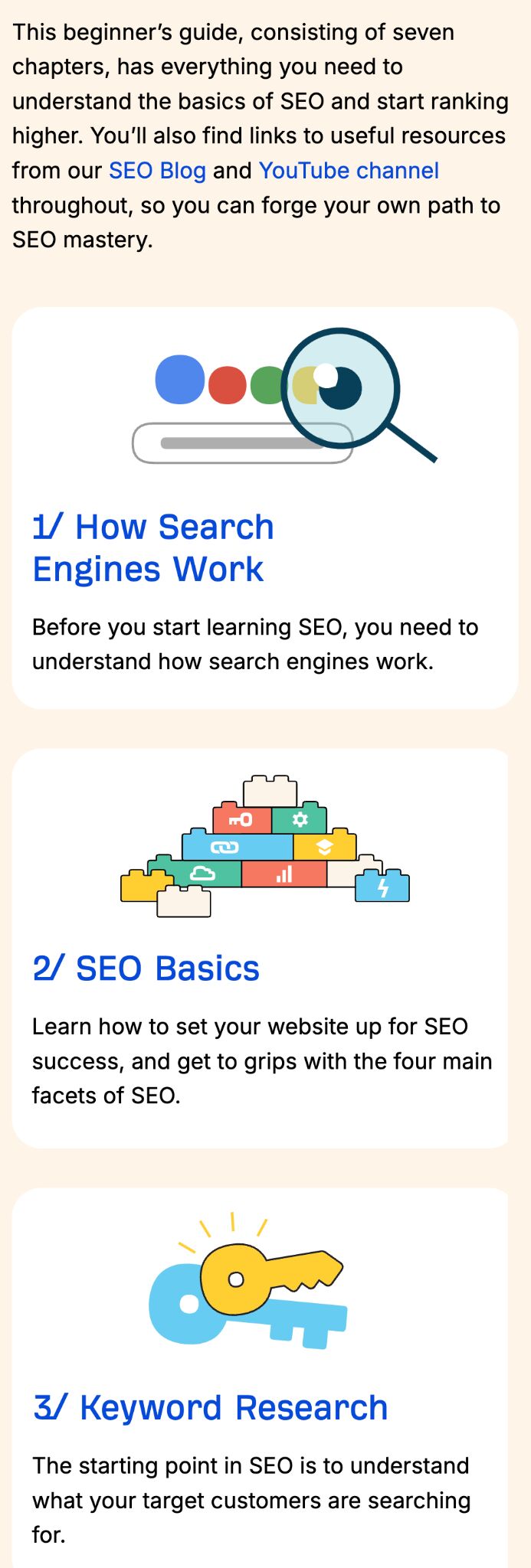

In the travel industry, you can make content hubs based on a potential traveler’s journey. Nina explains:
Start from “what would my audience need to know to plan a trip to this specific location based on their specific travel style?” Map out at least 10 posts in a topic cluster that helps someone go from “hmmm where should I go this summer?” to “I’ve got a fully booked trip and a great tour I can’t wait to go on!
Then rinse and repeat with different clusters, so that the blog becomes a one-stop shop for a person’s trip planning.”
What does a typical traveler’s journey look like? Here’s a diagram from Brennen that showcases the five stages of traveler intent:


For example, for an adventurous traveler, you could recommend a destination like Uzbekistan. A content hub for Uzbekistan may look like this:
- Why you should visit Uzbekistan
- When is the best time to visit Uzbekistan
- Things to do in Uzbekistan
- Best cities to visit in Uzbekistan
- The best Uzbek dishes you should try
- Where to stay in Uzbekistan
- Best restaurants in Tashkent
- Best restaurants in Samarkand
- Silk Roads tour Uzbekistan
- Uzbekistan Kygyrszstan 10 days tour
- Horse riding in Kygyrszstan and Uzbekistan
You can then take those ideas and put them into Keywords Explorer to see how searchers are searching for them and whether they have search volume:
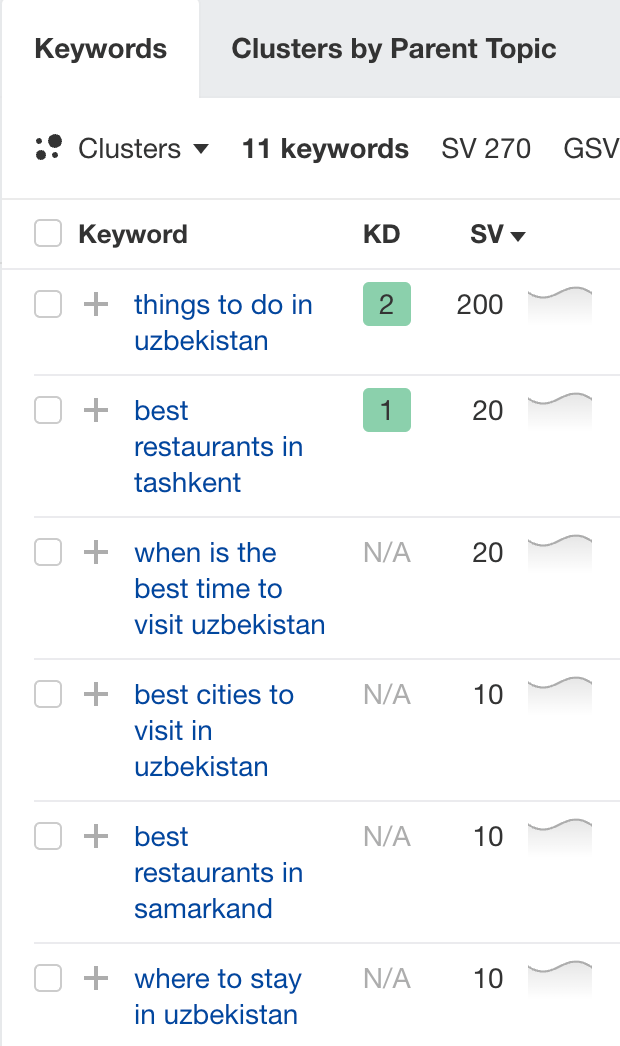

Jared said something that surprised me during our interview:
People are still using offline, high-street travel agents because they want that first-hand experience.
Travel is very personal. Every travelers aspires to a different itinerary—some want to see every touristy attraction, while others want to go off the beaten track. Some just want to laze on the beach, while others don’t mind the challenging climb up Kilimanjaro.
This is what Google is trying to do in the SERPs as well. They’re trying to prioritize content that demonstrates expertise, experience, authority, and trust (also known as EEAT). And the travel SEOs I talked to agree with infusing first-hand experience into your content.
The best way is to visit those locations in-person. As Nina tells me:
I do lots of research before I go somewhere, take heaps of photos, and take notes along the way. I speak to locals as much as I can, and speak to other travellers because my experience may not be indicative of everyone’s.
Being honest about what you do and don’t know is incredibly important. Being okay with sharing the negatives will build more trust than sugar-coating everything.
Make sure you’re not boring your audience with random nonsense, but add in your experience face planting in the cobblestones when you tried to wear high heels or that the restaurant says it has parking but you’ll need to turn down the side street to access it.
But this strategy has limitations. After all, it’s impossible to visit every location. So, another way is to hire freelance writers.
You shouldn’t hire just any freelancer though. It seems outrageous, but freelance writers can lie, as Katie experienced once. A freelance writer told Katie she went to a particular class and so was qualified to write about it. Turns out, after some fact-checking with the teacher of the class, she was never a student. She merely took something similar and thought she could write about it anyway.
So, you’d want to seriously vet these writers.
Here’s what Katie suggests:
- Look at their writing portfolio — Have they written about the location or experience before? Do they live there currently and have lived there for a long time?
- Ask for photos from the writers — Real-world photos are less likely to be faked.
- “Grill” them about the specifics of their experience — For example, Katie might ask them about their best airline points redemption. That answer can’t be generated from AI or cobbled together from the top-ranking pages.
Matthew does things differently—he goes straight for the best. Most of his contributors have written for major publications and guidebooks.
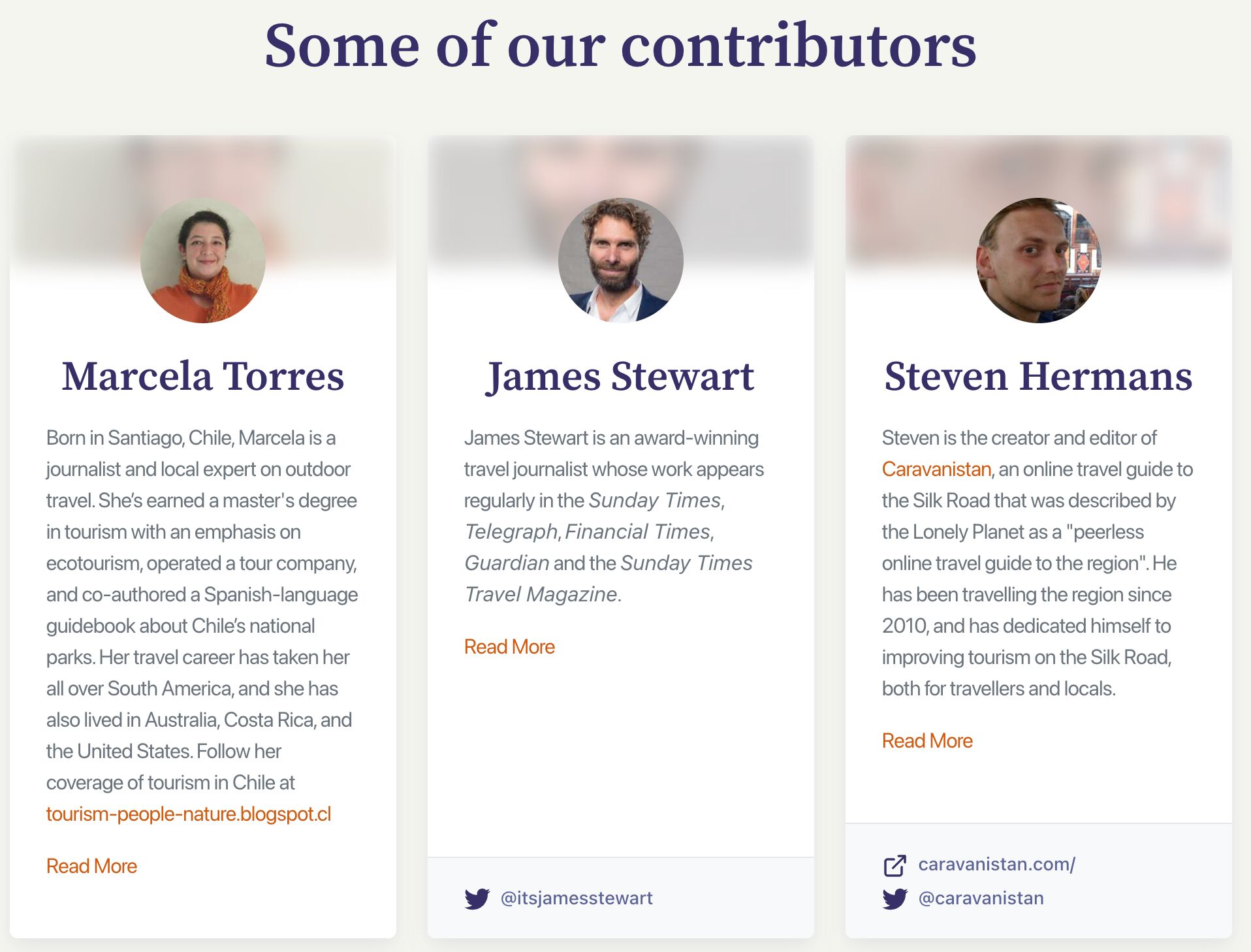

Most of these writers are themselves entities on Google’s Knowledge Graph, which contributes to the EEAT of his site. Additionally, since they also write for other publications, they occasionally link back to their articles on Horizon Guides.
When it comes to first-hand experience, Matthew looks at what’s already on the SERPs, interrogates LLMs (ChatGPT, Claude) to find out what’s already known, then goes to his contributors and asks if they disagree with any of it or whether they can add something new.
An example he gave me was the topic “hiking in Vietnam”. Most websites that rank for that keyword want to sell the visitor a trip to Sapa. But in reality, at least in his opinion, Sapa is simply too busy and too touristy, which may make for a poor trip for someone who’s flying hours to Vietnam. So, they offer alternatives instead of following what everyone else is writing about.
How do they hire writers? It all comes down to relationships. Decades in the industry have built both Matthew and Katie a rolodex of writers they can reach out to.
Katie also recruits from travel writing groups she belongs to and X:
For an assignment, looking for a travel writer who has Frontier’s all-you-can-fly pass. Pay $400+, please fill out this form.https://t.co/np73qkabBz
— Katie Hammel (@KatieHammel) April 24, 2024
Backlinks are an important Google ranking factor. However, given how saturated the travel industry is, it’s incredibly difficult to build links to important commercial pages.
The one strategy that most of the experts I talked to use is digital PR.
For example, Katie ran a campaign where they used their internal data to find the best and worst U.S airports for cheap international flights. The page got a total of 91 backlinks from 76 referring domains:
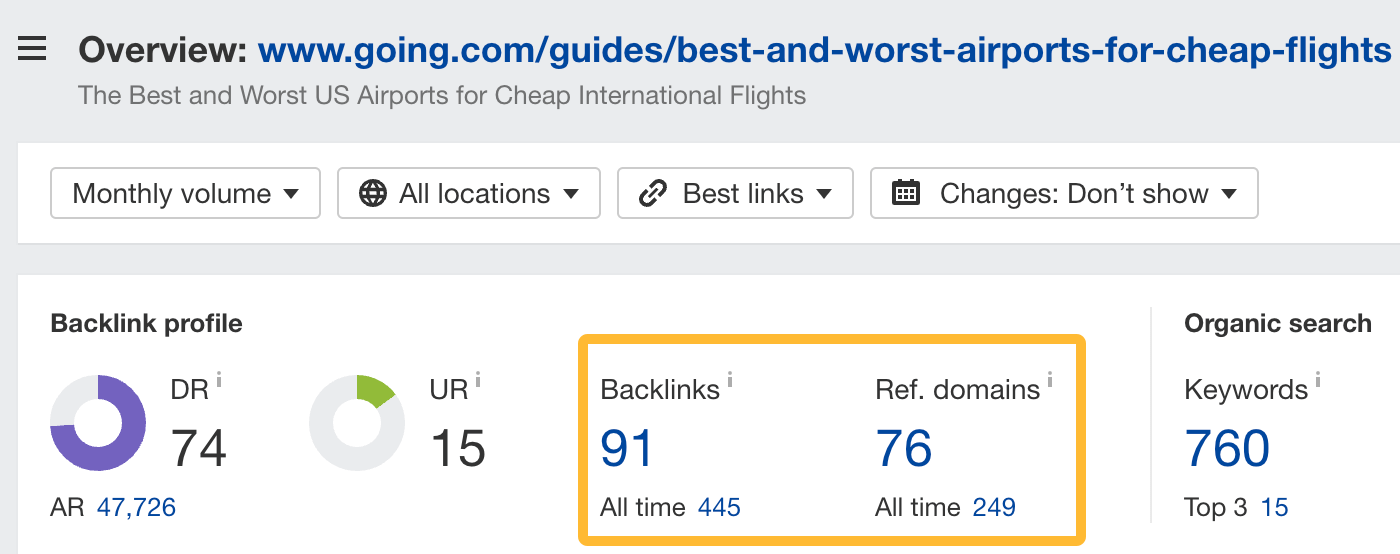

Most of these links were from media sites like USAToday, LA Times, SFGate, and TimeOut:
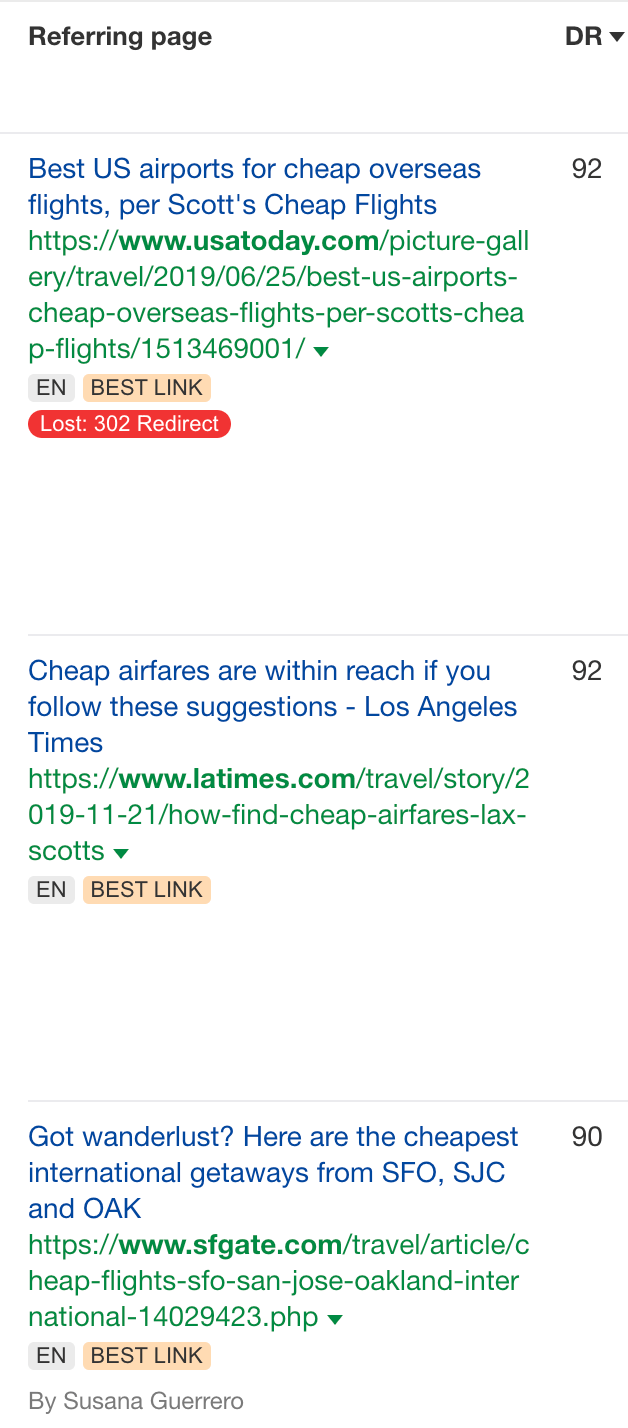

Likewise, one of Jared’s digital PR campaigns for his client yielded a respectable 68 backlinks from 58 referring domains:


Again, this campaign got links from media publications like USAToday, San Diego Union-Tribune, and Frommers:
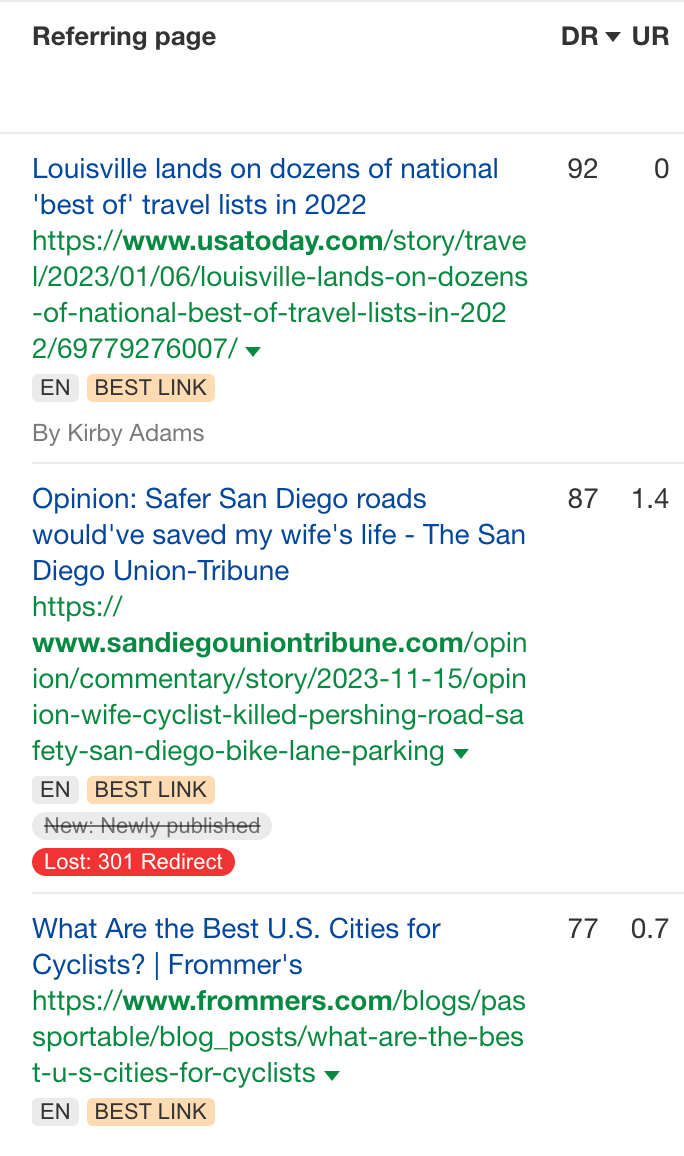

There are no surefire tips for making a digital PR campaign work, but here are some tips from the pros:
- Use your company’s internal data — For example, both Going and Hoppa used their booking data to create linkbait campaigns.
- Third-party data also works — Don’t give up just because you don’t have access to internal data. You can also use third-party data, like what Jared did for the best cities for biking campaign.
- Look at what’s trending or what people are talking about — What’s the cultural or societal hook? Jared’s campaign worked because there was a rise in interest in cycling due to the pandemic.
- Make your campaign hyper-local or design it to have a hyper-local angle — Local publications typically have less to report about, so they’re happy to feature or link to an interesting piece of content. For example, the best airports and best cities for cycling have individual hyper-local angles built in—the PR manager can reach out to each city’s newspaper to tell them they’ve been featured.
- Come up with multiple angles — When pitching journalists, don’t just use one angle. Brainstorm multiple angles — a national publication might be interested in the entire post, but an LA-based publication might only be interested that LA is featured.
You can learn more about digital PR in our guide: Digital PR: The Beginner’s Guide to Making Your Brand Unmissable
According to Brennen’s experience, page load time is strongly correlated with rankings in the travel industry.
Which makes sense, considering that pages for travel websites are media-heavy with lots of images, photos, and videos.
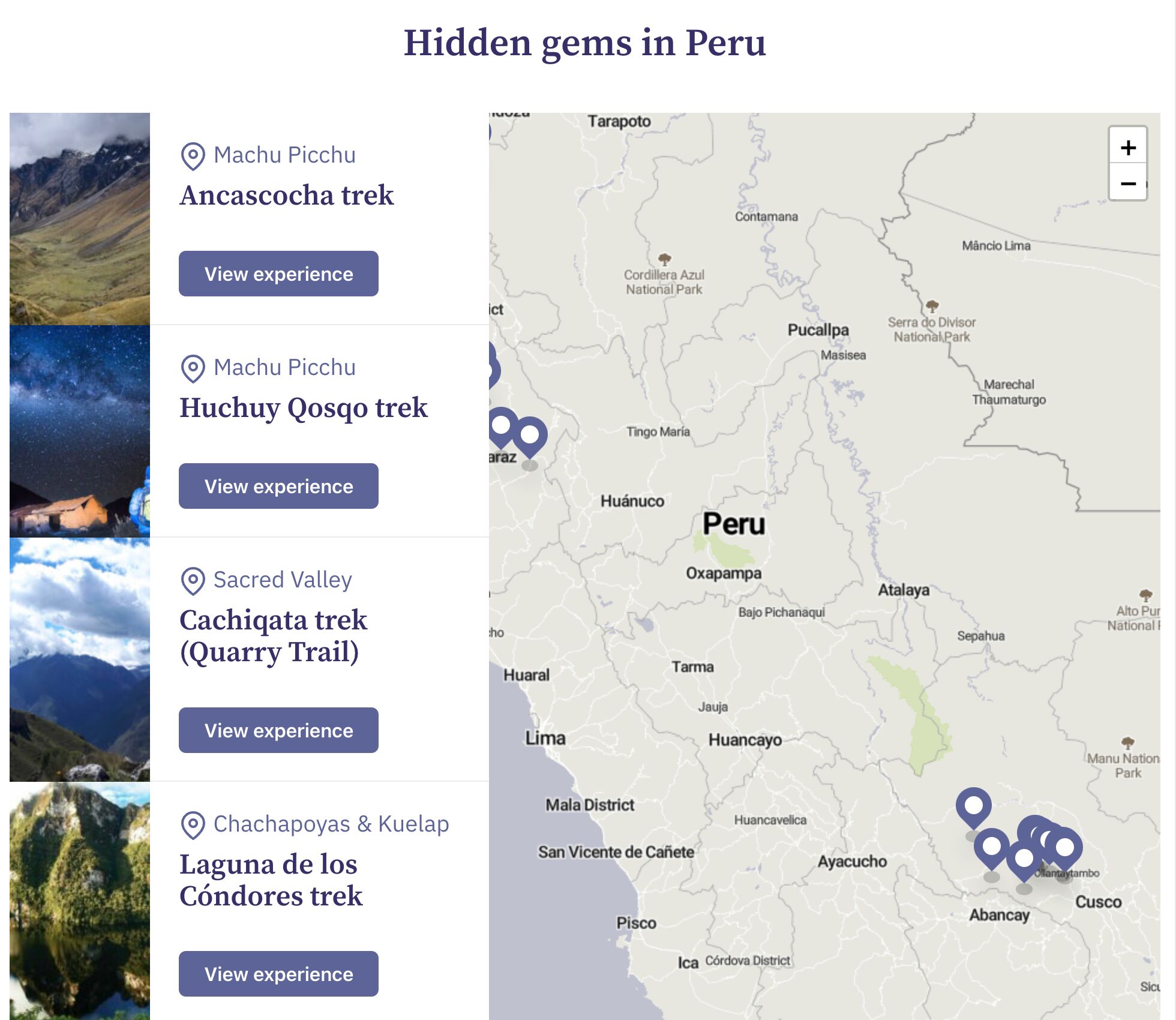

So, you’d want to make sure your site loads fast. To check your website’s speed, run a crawl with Ahrefs’ Site Audit. Then, head to the Performance report.


If you connect your API key from Google PageSpeed Insights to Site Audit, you can even check your Core Web Vitals, the three metrics that Google uses to measure a user’s experience on a webpage.
You can learn more about what Core Web Vitals are and how to improve them in our guide: What Are Core Web Vitals (CWVs) & How To Improve Them
Many travel queries are highly commercial. Even a TOFU query like “things to do in Barcelona” has tons of sponsored results:
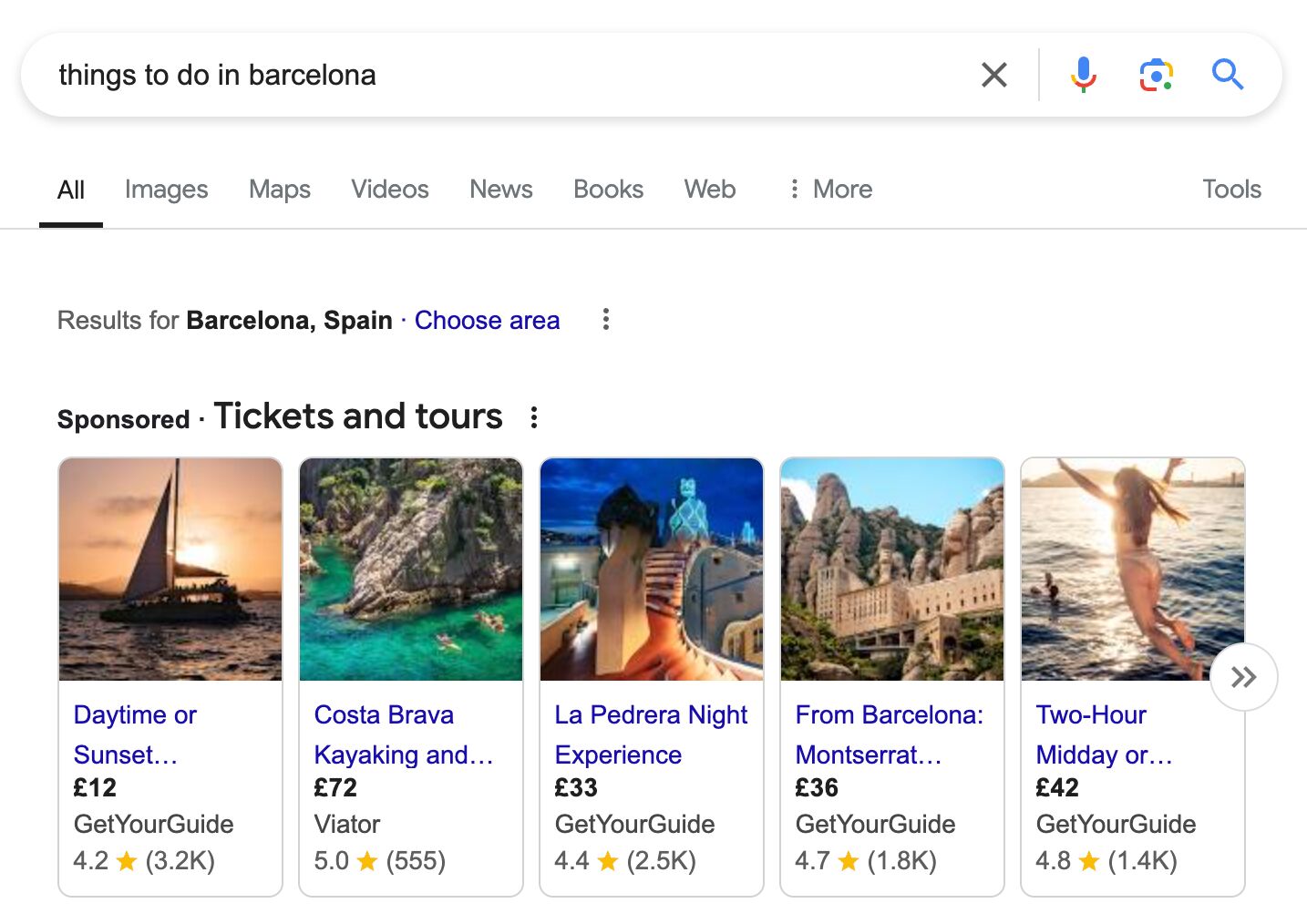

The truth is that while you may rank high, get lots of organic traffic, and educate travelers on a destination, they might run a Google search and simply click on a paid result and end up purchasing from that page.
You need paid marketing to convert customers in the travel industry.
That’s why Brennen suggests that travel websites should run paid marketing campaigns too, specifically retargeting campaigns. For example, if someone has read your article on “things to do in Samarkand”, you might want to retarget them with your Silk Road tour or Samarkand tour pages.
Final thoughts
Travel is an extremely saturated and competitive industry. If you want to compete with the giants in the SERPs, you’ll need first-hand experience, targeting keywords that drive conversions, and creating content that people want to link to.
This guide should give you everything you need to rank high and get more bookings or affiliate income for your travel website.



![How AEO Will Impact Your Business's Google Visibility in 2026 Why Your Small Business’s Google Visibility in 2026 Depends on AEO [Webinar]](https://articles.entireweb.com/wp-content/uploads/2026/01/How-AEO-Will-Impact-Your-Businesss-Google-Visibility-in-2026-400x240.png)
![How AEO Will Impact Your Business's Google Visibility in 2026 Why Your Small Business’s Google Visibility in 2026 Depends on AEO [Webinar]](https://articles.entireweb.com/wp-content/uploads/2026/01/How-AEO-Will-Impact-Your-Businesss-Google-Visibility-in-2026-80x80.png)















